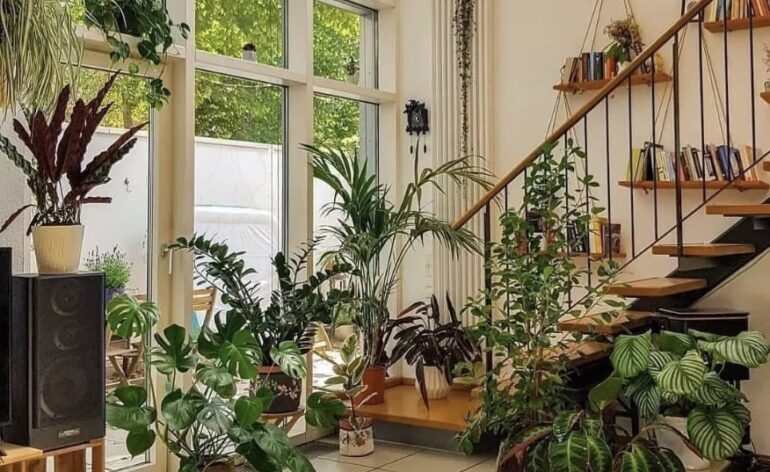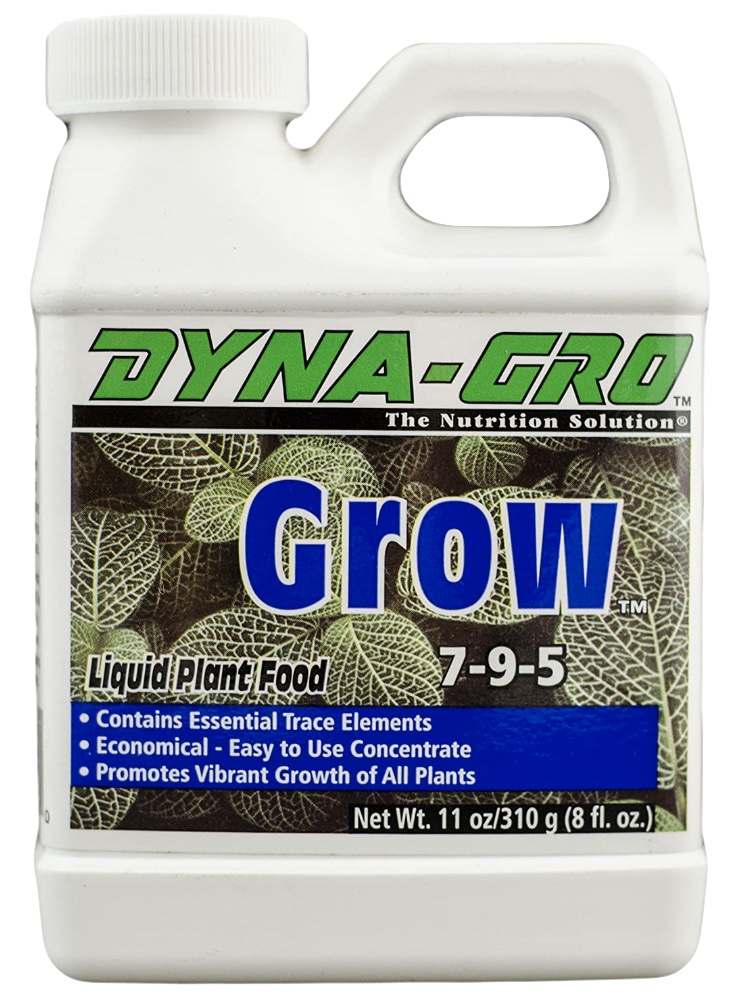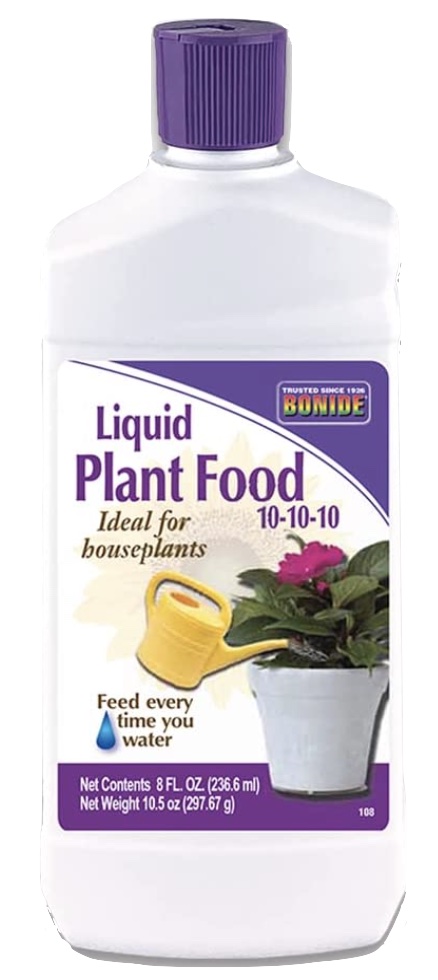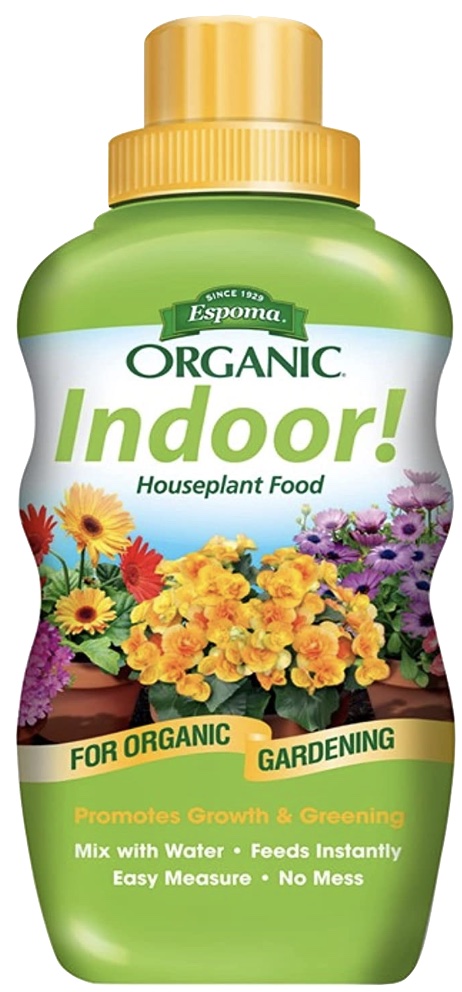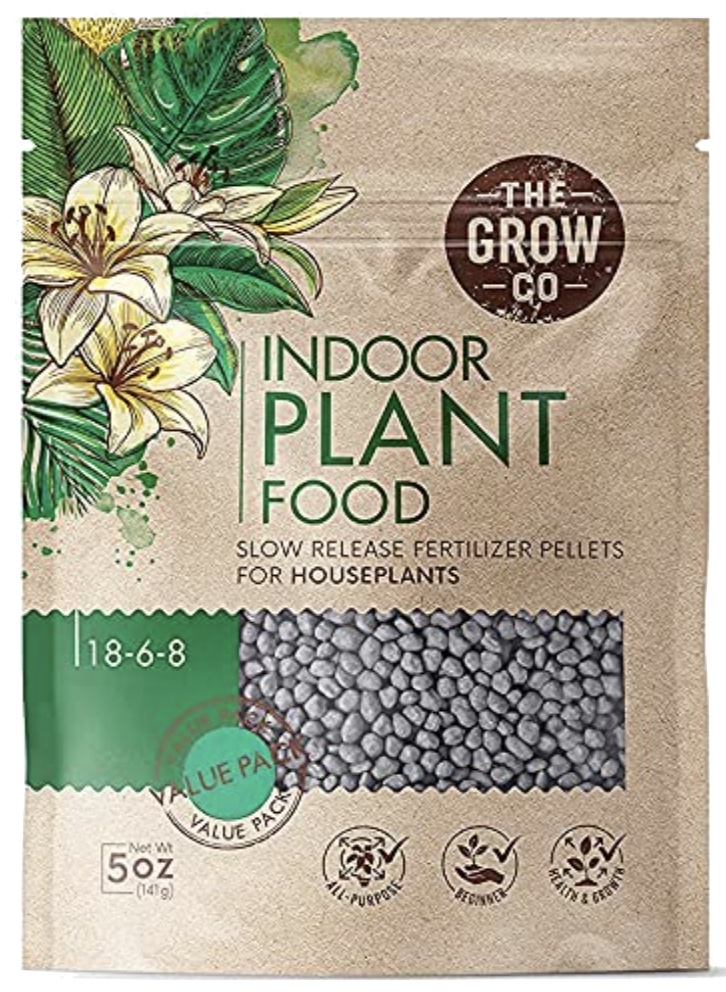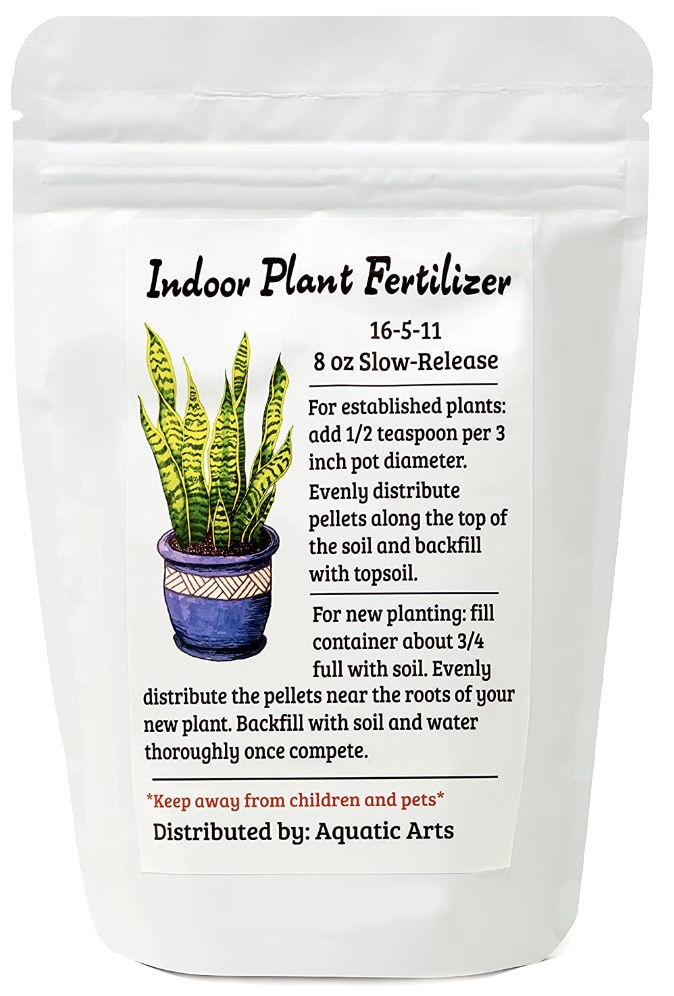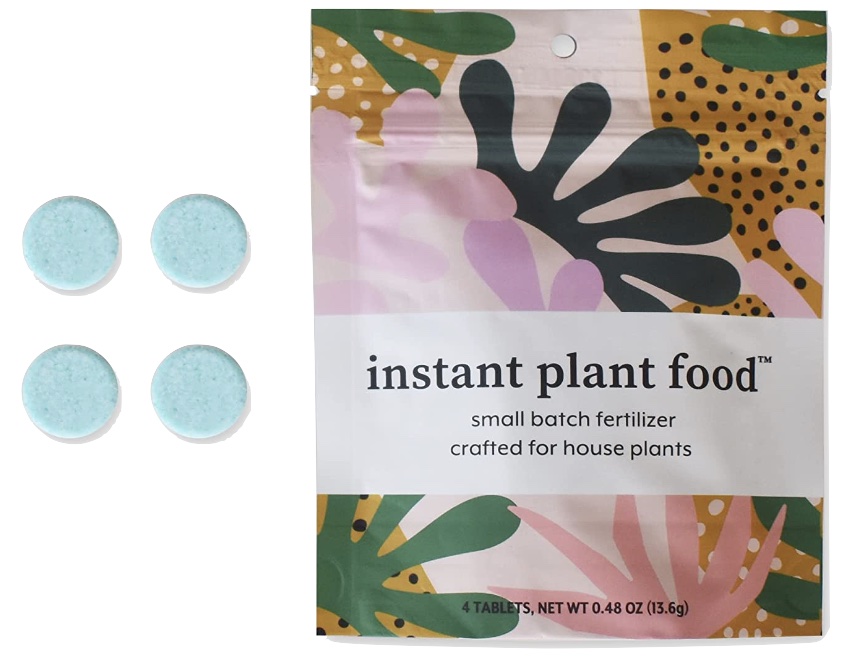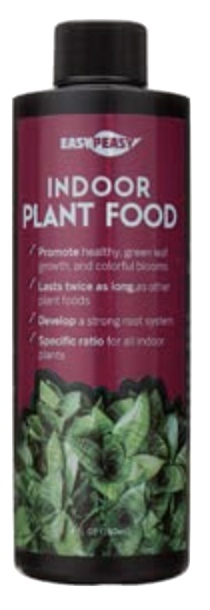8 Best Fertilizer For Indoor Plants – Reach New Heights in 2024
We independently evaluate all recommended products and services. If you click on links we provide, we may receive compensation.
When it comes to caring for your indoor plants, you probably know to give them the appropriate amounts of water and sunlight, but do you remember to feed them? Similar to humans, plants need food to flourish and bloom, especially indoor plants. And no, we’re not talking about human food. We’re talking about fertilizer.
Fertilizer is a vital component in sustaining your plants and ensuring beautiful blossoms. But how do you know what is the best fertilizer for indoor plants?
Don’t worry because we’ve compiled a list of the top plant food and fertilizers for indoor plants. Plus, you’ll learn about what you need to know when buying indoor plant fertilizer and frequently asked questions. Keep reading for more information and the best indoor plant fertilizer for your houseplants.
Key Takeaways
Fertilizer is essential for keeping your indoor plants happy and healthy, and the best fertilizers have a low and balanced nutrient level, don’t need to be applied too often, and are generally easy to use.
Below is our list of the best fertilizer for indoor plants, but we can narrow it down even further to Dyna-Gro Gro-008 7-9-5 Liquid Plant Food and Bonide Houseplant Liquid Plant Food for our second choice.
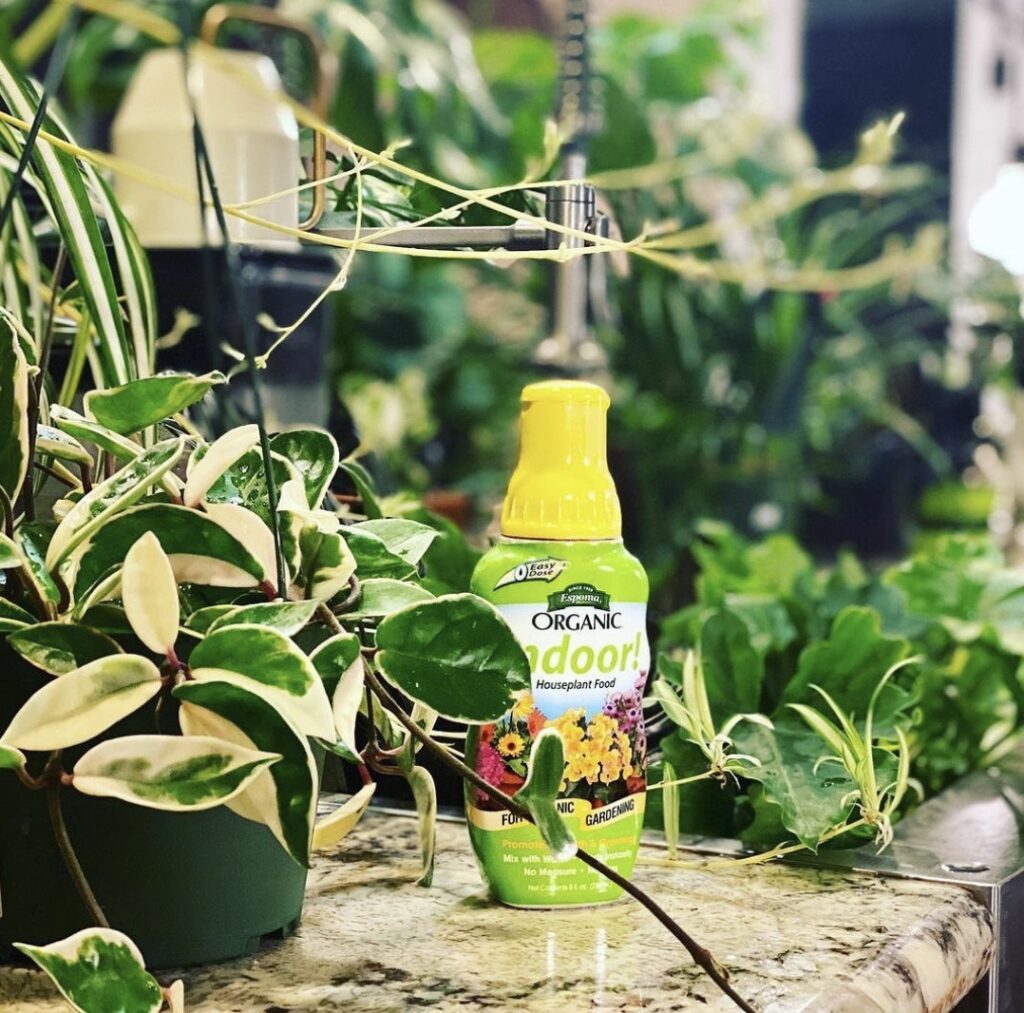
espomaorganic / Instagram
1. Overall Best Fertilizer for Indoor Plants: Dyna-Gro Gro-008 7-9-5 Liquid Plant Food
The best indoor plant fertilizer is a complete nutrient solution designed to give your plants the necessary nutrients they need to thrive, also known as Dyna-Gro Gro-008. With a ratio of 7-9-5, it provides a balanced blend of nitrogen, phosphorus, and potassium to promote healthy growth and strong root development.
Along with essential micronutrients that can be difficult to find in other fertilizers, such as magnesium, iron, and zinc, it also won’t alter the pH of your soil or growing medium, making it perfect for hydroponics and soil-based applications.
Dyna-Gro Gro-008 really is an all-in-one solution, so you won’t need to purchase additional supplements or additives for your plants. It can be used for seedlings to mature plants and includes five different types of mixing directions to help you through any stage.
Type: Liquid | Nutrient Levels: 7-9-5 | Organic or Synthetic: Synthetic | Suggested Frequency of Use: Every two to four weeks | Quantity: 8 ounces
2. Best Budget Fertilizer for Indoor Plants: Bonide Houseplant Liquid Plant Food
Just because you’re on a budget doesn’t mean you have to skimp on fertilizer or leave it out entirely. Instead, you can opt for Bonide Houseplant Liquid Plant Food. It upholds the national standard of 10-10-10, which provides an equal amount of phosphorus, nitrogen, and potassium to your plants.
Just like Dyna-Grow, Bondie also comes in an 8oz, but a little goes a long way. 1/8 of a teaspoon in a quart of water is all you need to keep your plants happy every time they get thirsty. If you’re looking for the best plant food for indoor plants like orchids succulents, this is an especially great option.
Type: Liquid | Nutrient Levels: 10-10-10 | Organic or Synthetic: Synthetic | Suggested Frequency of Use: Every time you water | Quantity: 8 ounces
3. Best Organic Fertilizer for Indoor Plants: Espoma Organic 8 Ounce Concentrated Indoor! Plant Food
If you’re looking for the best organic indoor plant fertilizer, look no further than Epsoma’s Organic Concentrated Indoor Plant Food. This easy-to-use organic liquid fertilizer comes with a healthy balance of nutrients that are vital for your plants’ growth.
The natural ingredients mean you can feel good about using it on your plants, knowing you’re not introducing any harmful chemicals or synthetic ingredients into your home. Plus, a little bit goes a long way, so one bottle can last for several applications.
This concentrated plant food is easy to use and can be applied directly to the indoor plant’s soil. Just mix it with water according to the instructions, and then water your plants as usual. It’s that simple. Get ready for healthy growth, strong roots, and vibrant foliage.
Type: Liquid | Nutrient Levels: 2-2-2 | Organic or Synthetic: Organic | Suggested Frequency of Use: Every 2-4 Weeks | Quantity: 8oz
4. Best Slow-Release Fertilizer: Indoor Plant Food – All-Purpose Fertilizer
If you can’t keep up with a schedule to fertilize your plants, one of the best indoor plant foods is a slow-release fertilizer like The Grow Co’s all-purpose indoor plant fertilizer. Unlike traditional liquid plant foods that provide a quick burst of nutrients, The Grow Co gives your plants a steady supply of nutrients over several months.
Slow-release pellets are particularly ideal for house plants that have a reputation for being high maintenance, such as orchids. To give you fewer care instructions to worry about, simply place the recommended amount of pellets one inch below the soil and water accordingly. Just don’t forget to set a reminder to repeat the process every few months.
Type: Granular | Nutrient Levels: 18-6-8 | Organic or Synthetic: Synthetic | Suggested Frequency of Use: Every 5-6 Months | Quantity: 5oz
5. Best Fertilizer for Indoor Plants on Amazon: Miracle-Gro Indoor Plant Food Spikes
When in doubt about a plant fertilizer, you can always rely on the Miracle-Gro Indoor Plant Food Spikes. These plant spikes feed your indoor plants continuously for two months before needing replacement, and they’re about as mess-free as you can get.
In addition to providing long-lasting nourishment, Miracle-Gro’s plant food spikes also provide low yet well-balanced nutrient levels, including the big three, phosphorous, nitrogen, and potassium.
Just keep in mind you’ll need to replace the spikes every month in the spring and summer and every two months in the fall and winter for the best results.
Type: Slow-release | Nutrient Levels: 6-12-6 | Organic or Synthetic: Synthetic | Suggested Frequency of Use: Every 30-60 Days | Quantity: 24-48 Spikes
6. Best Long-lasting Fertilizer for Indoor Plants: Aquatic Arts Indoor Plant Food (Slow-Release Pellets)
A long-lasting fertilizer like Aquatic Arts’ all-purpose indoor plant food works with many different indoor plant types, from spider plants and Boston ferns to orchids and peace lilies.
Just sprinkle some pellets on top of the soil or mix them in with the soil if it is your first time potting the plant. Then the appropriate levels of the big three nutrients give your plants the nourishment they need to flourish in an indoor setting.
Where the value really shines is that an 8 ounce bag can last you up to six months to a year, depending on how many houseplants you have.
Type: Granular | Nutrient Levels: 16-5-11 | Organic or Synthetic: Organic | Suggested Frequency of Use: Every 3 Months | Quantity: 8oz
7. Best Natural Fertilizer for Indoor Plants: Houseplant Fertilizer & Indoor Self-Dissolving Tablets
If you’ve ever used Alkaseltzer, you’ll have no trouble with Instant Biologics. Considering these tablets are made up of molasses and waste feedstock, we wouldn’t recommend drinking them, though.
This instant plant food requires no mess, clean up, measuring, or mixing, making them unbelievably simple to use and perfect for first-time plant owners. Fill a glass with water, drop the table in, and watch it fizzle.
While the fizzling is fun to watch, these tablets provide more than enough nutrients to nourish your plants. You can expect well-fed houseplants for up to three months from one all-natural tablet.
Type: Tablet | Nutrient Levels: 4-3-6 | Organic or Synthetic: Organic | Suggested Frequency of Use: Every 3 months | Quantity: 0.48 ounces
8. Best Liquid Fertilizer for Indoor Plants: Easy Peasy Liquid All Purpose Indoor Plant Food
With a near five-star rating and over 3,000 reviews, Easy Peasy’s liquid all-purpose fertilizer is the best fertilizer for indoor plants on Amazon. The high concentration of nutrients means you can expect healthy foliage and strong roots just by watering your plants every two weeks with the recommended amount of fertilizer.
Fully nourished plants aside, the reason this was chosen as the best plant food on Amazon is because of its budget-friendly price tag and five different size option. No matter what type of houseplant owner you are, there’s an option that’s perfect for you.
Type: Liquid | Nutrient Levels: 4-3-4 | Organic or Synthetic: Synthetic | Suggested Frequency of Use: Every 2 weeks | Quantity: 8 / 16 / 24 / 32 / 64oz
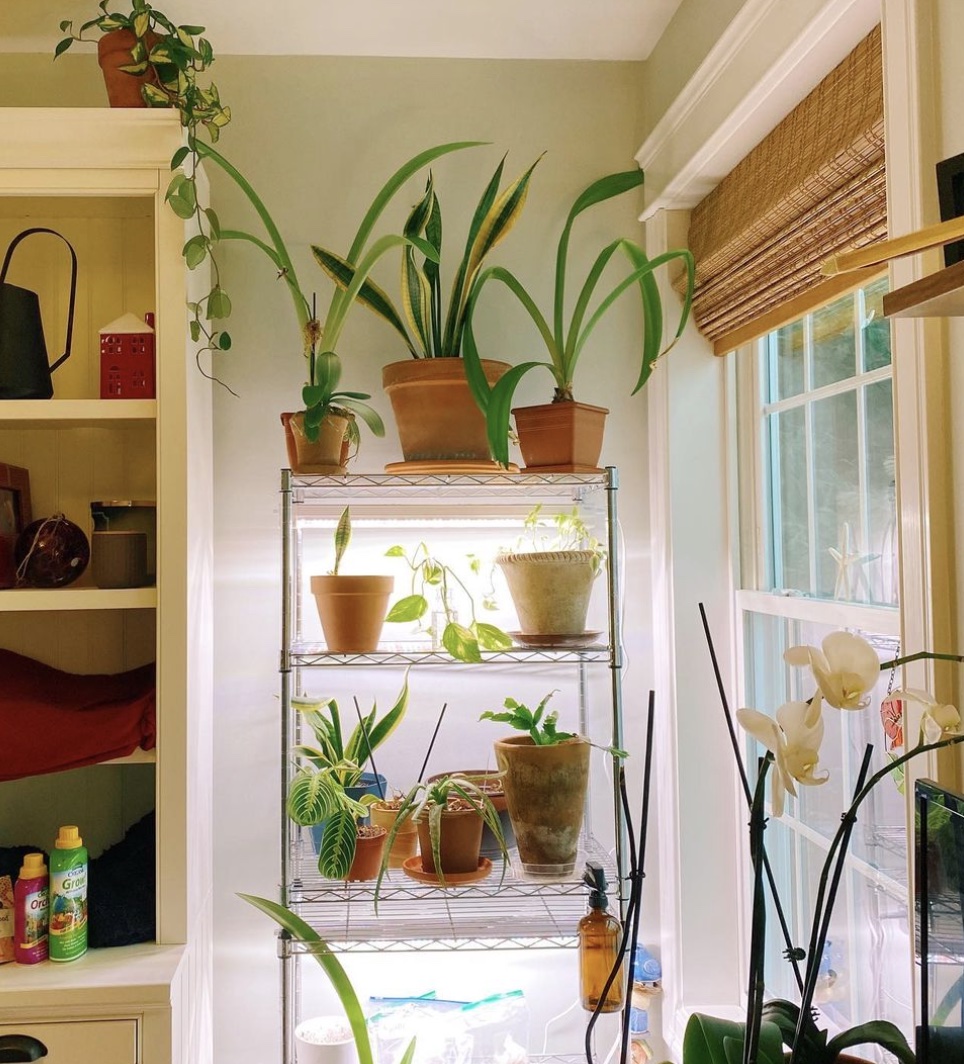
birchsalt / Instagram
What To Look for When Buying The Best Fertilizer for Indoor Plants
Nutrient Levels
When shopping around for the best fertilizer for indoor plants, you’ll notice three primary types: phosphorous, nitrogen, and potassium. These nutrients are known as “The Big 3” because they are essential in nourishing plants. However, these nutrient levels vary from fertilizer to fertilizer.
For houseplants specifically, you’ll want to look for a fertilizer with low, balanced phosphorus, nitrogen, and potassium levels.
Organic vs. Synthetic
Organic fertilizers are derived from organic, naturally occurring nutrients like organic waste or microbes, while synthetic fertilizers are manufactured minerals, gases, and inorganic materials.
Because organic fertilizers come from natural ingredients, they tend to provide better results and last longer. However, they can cost a bit more than synthetic fertilizers.
Type
Fertilizers, synthetic and organic, come in various forms, such as granulated, liquid, and slow-release. Liquid fertilizers are utilized when watering plants, while granulated and slow-release fertilizers mix in with the plant’s soil. However, while granulated fertilizer starts working right away for a specified amount of time before needing a refresh, slow-release fertilizer takes time to work and lasts longer.
Depending on your preference and need for ease of use, you’ll want to pay close attention to the type of fertilizer you purchase.
Frequency of Use
When looking for fertilizer, you’ll want to take a look at how frequently you’ll need to fertilize your plants. What works best with your schedule? How often will you remember or be able to fertilize them?
Some fertilizers will need to be used bi-weekly, and others can keep your plants happy and fed for a month or more. Typically, when considering the frequency of use, slow-release fertilizer will provide the best long-term solution.

espomaorganic / Instagram
Final Verdict
While every houseplant owner has different needs for different indoor plant fertilizers, the best overall is Dyna-Gro Gro-008 7-9-5 Liquid Plant Food. It’s not only easy to use, but provides optimal nutrient levels, works with many houseplant types, and will last a long time, winning the hard-fought spot for our best fertilizer for indoor plants.
FAQs
Is liquid fertilizer better for indoor plants?
Liquid fertilizers give you more control and they absorb quickly, but other fertilizer options work just as well. It really boils down to the particular plant, how big it is, and if requires specific nutrients.
How often should I feed indoor plants?
Fertilizing your indoor plants depends on the type of plant food you purchase. Some fertilizers have different durations for use, so you’ll need to check with the brand and type to ensure how often you’ll need to feed your plants. However, a good rule of thumb to keep in mind is to fertilize every two to three weeks.
What houseplants don’t like fertilizer?
Different plants react differently to fertilizer, but cacti and succulents are the two types of plants that don’t particularly need fertilizer because they can survive without it. If you choose to fertilize those plants, you only need to do so rarely.
How do I know if my plants need fertilizer?
A good way to gauge when your plants need fertilizer is if you notice any light green or yellow discoloration on the leaves, as this can be a sign of a lack of nutrients.

